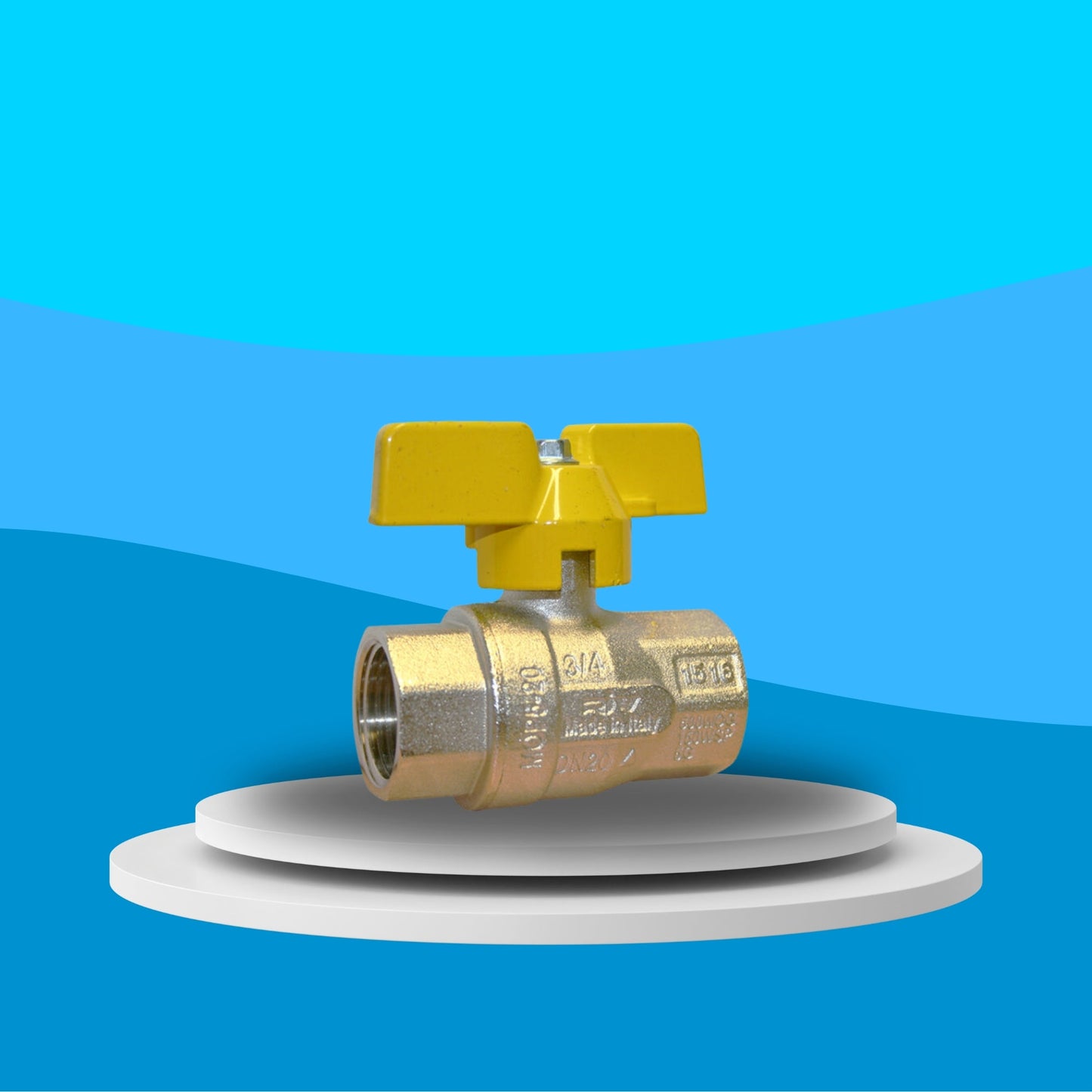Wras Valves
Wras Approved Brass Ball Valve - PN64 BSI Gas Approved - HTB Screwed BSPP (Butterfly Handle)
Wras Approved Brass Ball Valve - PN64 BSI Gas Approved - HTB Screwed BSPP (Butterfly Handle)
Couldn't load pickup availability
WRAS Approved | BSI Gas Approved | PN64 Rated | HTB Certified | BSPP Threaded | Butterfly Handle
This WRAS Approved Brass Ball Valve with PN64 pressure rating, HTB (High Temperature & Blowout Proof) certification, and BSI Gas Approval is a reliable and compact solution for use in both potable water and gas installations. Designed with screwed BSPP (British Standard Pipe Parallel) threads, the valve ensures a secure and leak-free connection in a wide range of system configurations.
The butterfly handle offers a low-profile, space-saving alternative to standard lever-operated valves, making it ideal for confined spaces or areas requiring discreet operation. Its bright colour coding and ergonomic grip provide clear visual identification and smooth shut-off control.
Constructed from high-grade brass for long-term durability, this valve is suitable for high-pressure systems up to PN64, making it an excellent fit for commercial and industrial water or gas systems where performance and compliance are essential. With full WRAS and BSI Gas certification, this valve delivers dependable performance while meeting all regulatory requirements for potable water and gas safety.
WV 7164
Share

FAQ's
What is the difference between a valve and an actuator?
What types of actuators are available?
The main types of actuators are:
Pneumatic actuators – use compressed air for fast, reliable operation.
Electric actuators – use electrical power for precise control.
Hydraulic actuators – use fluid pressure for high-torque applications.
Each type offers unique advantages depending on the environment, media, and system control needs.
How do I choose the right actuator for my valve?
To select the correct actuator, consider:
Valve type and torque requirement
Power source available (air, electric, or hydraulic)
Operating environment (temperature, humidity, hazardous area)
Control signal type (on/off or modulating)
Matching actuator torque and compatibility with the valve’s ISO mounting ensures reliable performance.
What are the main types of valves used in automation?
The most common valves in automated systems include:
Ball valves – for tight shutoff and quick operation.
Butterfly valves – for larger flow control with compact design.
Globe valves – for precise throttling and flow regulation.
Check valves – to prevent backflow.
Gate valves – for full bore flow isolation.
What’s the difference between a double-acting and spring-return actuator?
Double-acting actuators use air (or power) to both open and close the valve.
Spring-return actuators use air to open (or close) the valve, and a built-in spring to automatically return it to a safe position when power or air is lost — ideal for fail-safe operation.
How often should valves and actuators be serviced?
Regular maintenance intervals depend on operating conditions, but a good rule of thumb is to inspect every 6–12 months.
This includes checking for leaks, lubrication, seal wear, and actuator responsiveness to prevent unexpected downtime.

